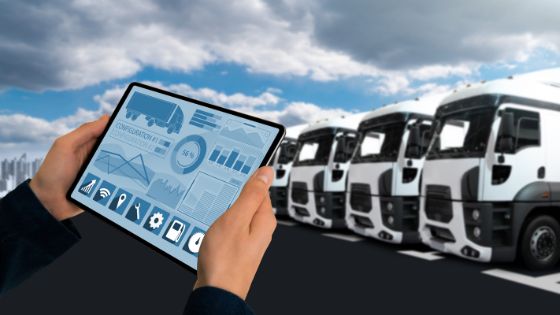Transportation management is the process of organizing the movement of goods and people to meet specific objectives. The benefits of effective transportation management include improved efficiency, increased safety, and lower costs. Let us take a closer look at how transportation management works and the different components involved.


How does transportation management work:
Transportation management is the process of organizing and coordinating transportation resources and systems to move goods and people efficiently. It includes planning, implementation, and monitoring of transportation systems and activities to meet organizational goals.
Transportation management is a critical function in logistics and supply chain operations, as it determines how goods will be moved from one point to another. In recent years, transportation management has become more complex as businesses have expanded their supply chains to global levels.
As a result, transportation managers must now contend with a variety of factors such as customs regulations, currency fluctuations, and security concerns. Despite the challenges, transportation management is essential for ensuring that goods reach their destination safely and on time.
Steps to follow for better transportation management:
- The first step in transportation management is to develop a plan. This plan should take into account the specific objectives of the organization, the available resources, and the constraints imposed by time and space.
- Once the plan is in place, the next step is to implement it. This involves selecting the transportation mode, routing the shipments, and scheduling the pickups and deliveries.
- The final step is to monitor the system to ensure that it is running smoothly and to make changes as needed.
What are the different components of transportation management:
A transportation management system (TMS) is a software application designed to plan, execute, and optimize the movement of goods. A TMS typically consists of three main components: transportation planning, transportation execution, and transportation performance management.
- Transportation planning is the process of determining how best to move goods from one location to another. This involves routing, mode selection, and loan consolidation.
- Transportation execution is the process of actually carrying out the transportation plan. This includes activities such as load tendering, carrier selection, and freight tracking.
- Transportation performance management is the process of monitoring and analyzing the performance of the transportation system. This includes metrics such as on-time delivery, cost per mile, and carbon emissions.
By managing these three components effectively, a TMS can help companies improve their transportation operations and reduce their overall costs.
The benefits of transportation management:
- By carefully managing transportation, businesses can improve their bottom line by reducing costs and increasing efficiency.
- In addition, effective transportation management can help to improve customer satisfaction by ensuring that goods are delivered on time and in good condition.
- As a result, transportation management is an essential part of any successful business operation.
What are the best practices for transportation management?
When it comes to transportation management, there are a few best practices that businesses should keep in mind.
- First, it’s important to have a clear understanding of your shipping needs. What type of goods are you shipping? How often do you need to ship them? What is the time frame for delivery?
- Once you have a good understanding of your shipping needs, you can start looking at transportation options. There are a variety of transportation methods available, and each has its own advantages and disadvantages. You’ll need to evaluate your options based on cost, speed, and reliability.
- Once you’ve selected a transportation method, it’s important to stay organized and keep track of your shipments. This includes keeping accurate records of pick-ups and deliveries, as well as tracking any changes or delays in the delivery process.
Endnote:
Successful transportation management plays a vital role in the success of any business that relies on the movement of goods to customers. By following these best practices, you can ensure that your transportation management is efficient and effective.














